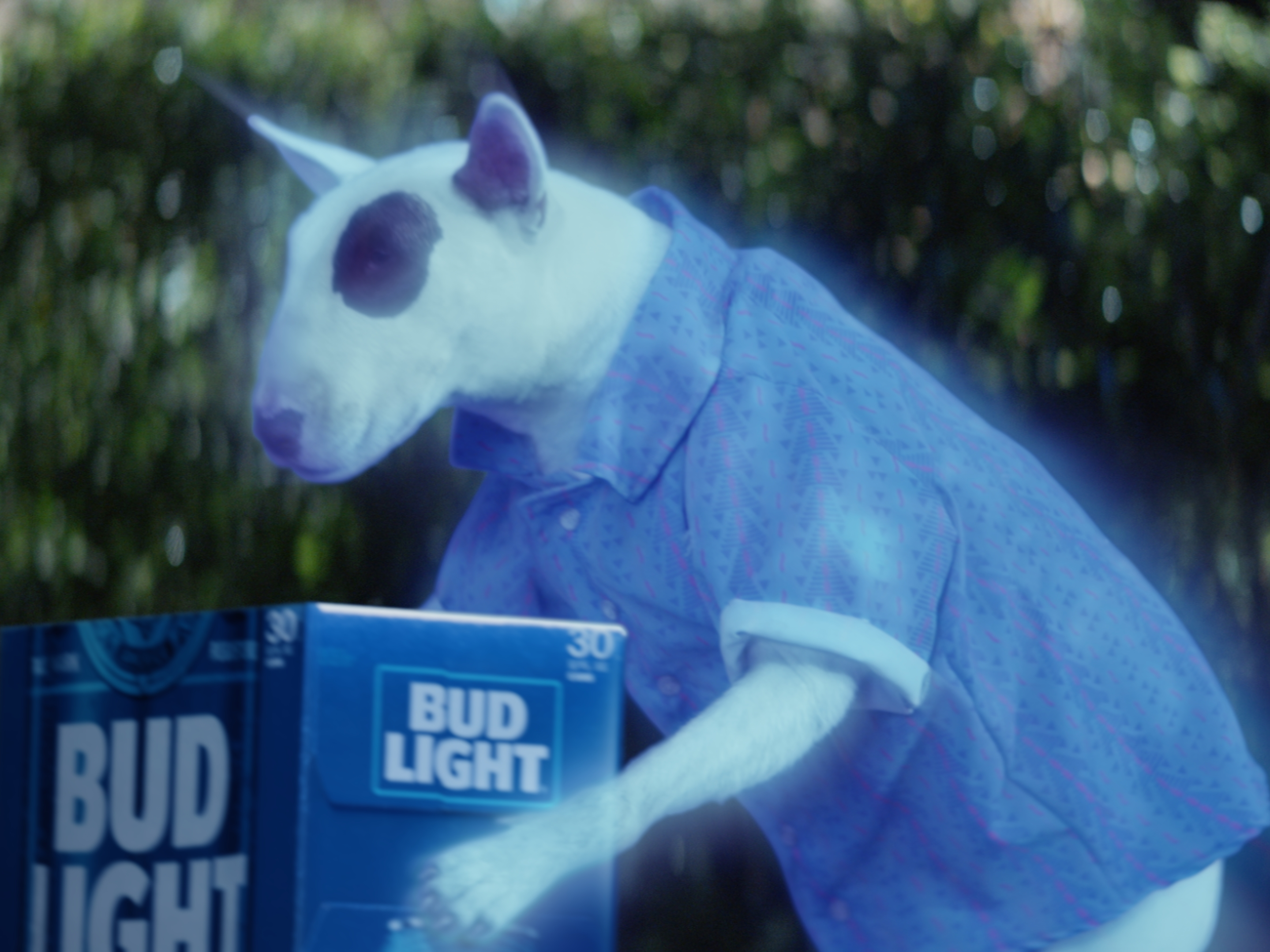Bud Light just revived its most controversial mascot of all time: Spuds MacKenzie.
The beer brand debuted a commercial starring the ghost of Spuds MacKenzie during the Super Bowl. In the ad, Spuds takes on a Christmas Carol-esque role, encouraging an anti-social young man to spend more time with his friends.
Spuds MacKenzie has a rich and controversial place in Bud Lights’ history.
Bud Light first introduced a “super party animal named Spuds MacKenzie,” during the Super Bowl in 1987 and the dog was an immediate hit. The Bull Terrier helped increase Bud Light sales by 20% between 1987 and 1988, The New York Times reported.
Spuds was everywhere – on t-shirts, posters, lamps, and more. Sir Mix-A-Lot even drew inspiration from the ads, telling the AV Club in 2003 that his iconic song “Baby Got Back” was intended to praise women who didn’t look like “the Spuds MacKenzie girls,” which he described as “little skinny chicks looking like stop signs, with big hair and skinny bodies.”
Spuds' time in the spotlight was short-lived, however, in part due to intense opposition from a US senator.

Republican Senator Strom Thurmond accused Bud Light of using Spuds as a mascot to encourage under-aged drinking and glamorize the use of alcohol. In November 1987, Thurmond took to the Senate floor waving a stuffed "Spuds MacKenzie" doll and demanded that Anheuser-Busch halt the campaign. 
"I am not confident in the voluntary efforts of the alcohol beverage industry to increase public awareness of the hazards of alcohol abuse," Thurmond said, according to the Associated Press. "With 12-year-olds drinking wine coolers and wearing 'Spuds MacKenzie' T-shirts, there is no basis for such confidence."
Mothers Against Drunk Driving launched a campaign against Spuds, and some schools began banning apparel featuring the canine.
The mascot was retired in 1989, with Bud Light saying it was simply time to move on creatively.
As Spuds became an icon, the canine's personal life was put under the microscope.
http://instagr.am/p/BMo8zJ9Af2U
As part of Spuds macho image, the dog dressed in a tuxedo, driven around in limousines, and surrounded by beautiful "Spudettes."
However, it was soon discovered that the party animal was in fact a female dog. People reported that the brand's representatives went as far as shielding the canine actor, whose real name was Honey Tree Evil Eye, from cameras with their coats while she relieved herself.
http://instagr.am/p/BJ58awOBc_P
Gossip didn't end with questions of Spuds' gender.
Rumors that Spuds died in a limo crash or while strapped to a surfboard had to be debunked by People a few months after the Super Bowl ad ran.
Honey Tree Evil Eye died in 1993 after four years of retirement.
http://instagr.am/p/BI3FOKjDRv7
Honey Tree Evil Eye, nicknamed Evie, spent her final years in North Riverside, Illinois, and was 10 years old when she passed away due to kidney failure.
This isn't the first time a brand has tried to resurect a mascot.
When KFC brought Colonel Sanders back from the dead in May 2015, the chain faced some backlash from customers who believed the ads to be too irreverent. However, the chain's sales have steadily grown in the almost two years since the return of the Colonel.
http://instagr.am/p/BGfsHiBoZvV
Colonel Sanders was not portrayed as a ghost, as Spuds will be in the ad.
Here's Bud Light's Super Bowl ad, titled "Ghost Spud":
http://www.youtube.com/watch?v=aYeXldMEpV8

